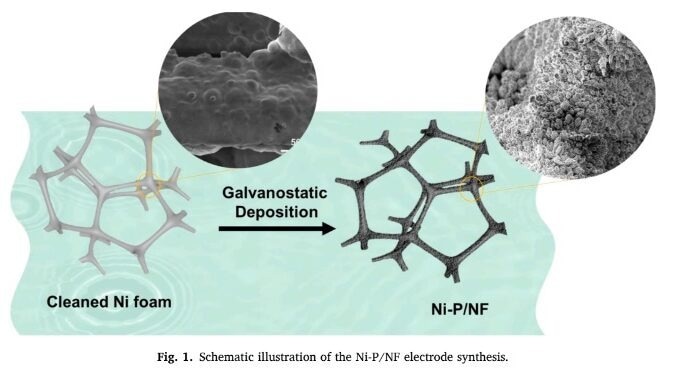Hydrogen (H2) is being explored as a potential alternative to fossil fuels, contributing significantly to atmospheric emissions and global warming. However, reducing production costs is essential for it to be a feasible choice.
 The researchers set out to analyze the performance of amorphous nickel phosphide (Ni-P) electrodes synthesized via electrodeposition on nickel foam. Image Credit: Center for Development of Functional Materials.
The researchers set out to analyze the performance of amorphous nickel phosphide (Ni-P) electrodes synthesized via electrodeposition on nickel foam. Image Credit: Center for Development of Functional Materials.
Researchers from the Center for Development of Functional Materials (CDMF), a Research, Innovation, and Dissemination Center (RIDC) supported by FAPESP and based at the Federal University of São Carlos (UFSCar) in São Paulo state, Brazil, described the synthesis of a nickel phosphide electrode that revealed high efficiency in hydrogen evolution reaction (HER) electrocatalysis.
This reaction, while still expensive, involves the breakdown of water molecules to release hydrogen ions through a process known as hydrolysis. The study was published in the journal Electrochimica Acta.
The electrochemical generation of hydrogen through hydrolysis represents a promising method with zero carbon emissions. The effectiveness of this technique hinges on the capability of the electrocatalyst.
The researchers detailed an experiment to evaluate the efficacy of amorphous nickel phosphide (Ni-P) electrodes, which were synthesized via electrodeposition on Ni foam and employed as an electrocatalyst for the HER. The 3-Ni-P electrode demonstrated exceptional performance across alkaline, neutral, and acidic environments. Additionally, the Ni-P films exhibited outstanding stability under the various conditions examined.
The electrode's impressive performance was credited to its granular structure, which provides a substantial surface area, facilitating effective interaction with the electrolyte and promoting HER kinetics.
The researchers highlight the significance of these findings in the search for a catalyst that is not only stable and easily synthesized but also capable of operating efficiently across a wide pH range for hydrogen production from water.
The first author of the study is Lucia Mascaro. The co-authors include Anelisse Brunca da Silva, Marina Medina, and Lorena Goulart.
Journal Reference:
Silva, A. B., et al. (2024) One-step electrodeposited nickel phosphide electrode for pH-universal electrochemical hydrogen production. Electrochimica Acta. doi.org/10.1016/j.electacta.2023.143679.